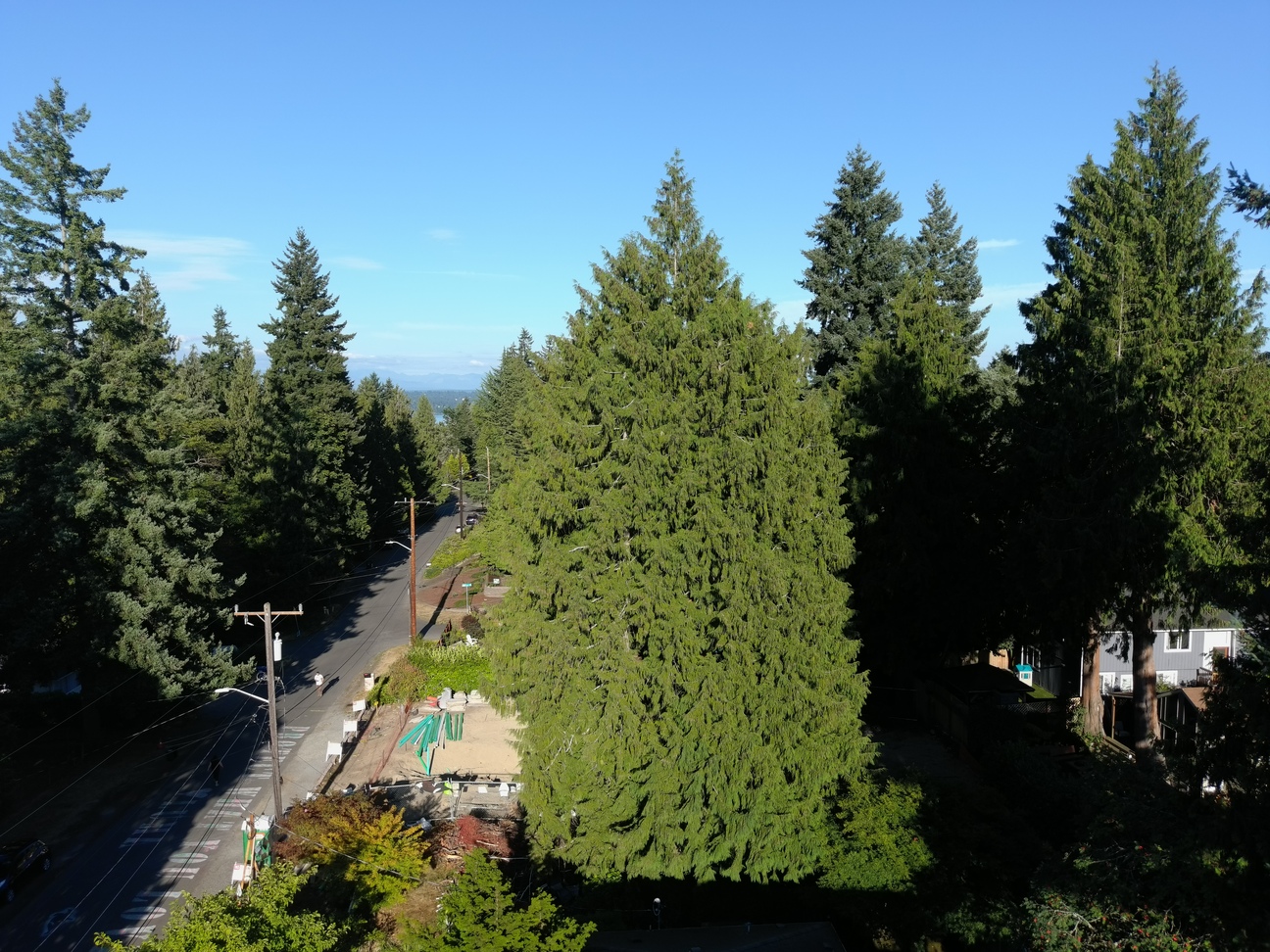The City of Seattle announced today that it has reached an agreement with the Snoqulamie Tribe, lender Legacy Capital, and Legacy’s partners to preserve a large, healthy western red cedar located on a parcel in the Wedgwood neighborhood, in an important and hopefully precedent-setting victory for tree retention.
The tree, affectionately named Luma, has become globally famous this summer after climate and environmental protection activists rallied to save it. Among those activists are several who have courageously acted to protect Luma from chainsaws with their own bodies. Taking the pseudonym Droplet, they have staged a weekslong sit-in, with the help of ground crews and a supportive neighbor.

Though initially uncooperative and resistant to appeals to protect the tree, Legacy, Rock House Builders (the property owner), and Bad Boyz GC (the contractor) have now agreed to leave Luma standing and modify their plans for the parcel.
Tree protection activists scrutinizing the behavior of Legacy and its partners have found that they often revise the site plans they submit to the city so they can chop down trees that they do not actually need to cut in order to construct new homes on those parcels, which is just deplorable. A pavilion set up near Luma has a printed copy of one of the site plans that shows the tree intact.
I photographed this plan yesterday when I visited Luma. Here’s what it looks like:

Luma is located on the edge of the parcel that Legacy is redeveloping. It is estimated to be several hundred years old and is considered a culturally modified tree. That means it was altered by our indigenous Coast Salish peoples.
The Snoqualmie Tribe has explained that ancestors would shape the boughs of trees such as Luma to provide directions to important sites. Luma was apparently used to denote the presence of a trail system that preceded Seattle’s founding.
The tribe has been actively working to save Luma for several weeks.
This cannot be emphasized enough: Legacy does not need to remove Luma in order to build new homes on the property it purchased. Luma is not standing in the way of the redevelopment of the property. It is not an obstacle or barrier to the construction of housing. Rather, it is a neighborhood icon, a climate action resource, a cultural treasure, and a connection to our past.
A company named Legacy ought to have understood that from the get-go. It shouldn’t have taken a community outcry, sit-in, and global media coverage to get Legacy and its partners to reconsider and commit to doing the right thing.
“Trees and housing are both critically important to Seattle’s future,” Seattle Mayor Bruce Harrell said in a statement. “Working together, I’m grateful for the collaborative approach embraced by the owner, builder, lender, and Snoqualmie Tribe to reach a solution preserving this culturally modified tree and allowing for much needed housing. We look forward to continued partnership with Tribes and regional Native leaders to identify and protect culturally modified trees in our city.”
NPI’s research has repeatedly found that massive majorities of Seattle voters support policies to maximize tree retention and grow the Emerald City’s urban forests. Years of tree canopy decline have left Seattleites worried.
A supermajority of special election voters told us in January they are concerned about tree loss as redevelopment takes place. What almost happened to Luma shows why they have good reason to be concerned.
If you’d like to read our tree protection findings, navigate to these posts:
- Seattle voters overwhelmingly favor policies to protect and expand the city’s tree canopy
- Second set of Seattle tree protection poll findings affirms voters value urban forests
- Two-thirds of Seattle voters concerned about tree loss with housing density increasing
Our team would like to see tree protection embraced by more urbanists in Seattle’s progressive community. Our urban forests are an essential resource for mitigating climate damage and creating healthy neighborhoods that people want to live in. Trees provide shade, protection from noise pollution, and essential habitat for birds and other creatures. They enhance our spiritual well-being and connection to nature. There is no “technology” we can invent to address climate damage that will ever be superior to what nature has given us.
Trees like Luma are not an impediment to attainable housing and denser communities. Rather, they are an asset — and that is how we need to treat them.

